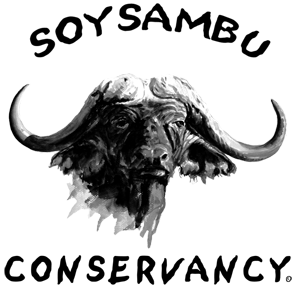Shared By:Duncan
Historically throughout most of the world, wildlife and livestock would roam freely and were fenced out of areas, such as gardens or fields of crops, hay fields where they were unwanted. Over time, especially where crop agriculture became dominant and population density of both humans and animals was significant, parks, reserves, livestock owners and conservation areas were fenced to reduce conflicts.
The earliest fences were made of available materials, usually stones or wood, and these materials are still used for fences today. In areas where field stones are plentiful and naturally available, fences can be built up over the years as the stones are collected from the natural piles, the transport and labour is the main requirement.
Soysambu Conservancy Stonewall Fence.
The Soysambu stonewall project was started in late 2008 on the Southern side of the lake and stretched from the shore of Lake Elmenteita to Sleeping Warrior Hill broken by the Gilgil-Elementeita road bordering Ututu and Horse Shoe Crater areas. This project has been extended to the North Western side of the Soysambu in areas bordering Kiungururia areas. This stonewall will be improved with electric fence on the top as there are pole reinforcing in the middle of the stone after intervals. By erecting few strands of wires on the top,solar powering and stones on the ground, the fence will be able to control trespassing domestic hunting dogs, livestock and reduce trespass from the community.
The Soysambu’s dry-stone fence has no mortar. The artisans place the stones so that their own weight and peculiar shapes hold them together from within. At first sight the stones can seem well fitted. Small stones occupy odd spots; loose fill can be seen spilling out. These fences are said to stand for over 150 years under the pressure of the years and the forces of life.
Electric fence.
The Soysambu electric fencing was erected in 2009 along the Nakuru-Nairobi highway (A-104) stretching for about 12 kilometers mainly to mitigate human-wildlife conflicts on the roads and neighboring community. Electric fencing generally became widely available in the 1950s and has been widely used both for temporary fences and as a means to improve the security of fences made of other materials. This solar powered fence is made using lightweight steel wire (usually 14-17 gauge) attached to posts with insulators made porcelain or plastic. With a small power house in the centre at Kiunguroria Gate as a control to the left and right ends of the fence .A fence charger in the powerhouse places an electrical pulse from ground to the wire about once per second. The pulse is narrow and usually around 5-20 kV. Animals receive an uncomfortable but harmless shock when contacting the wire, and learn to stay away from it.
Smooth Wire Fence
This fence type was mainly used in dividing the Soysambu Ranch into paddocks for the livestock. Smooth (or plain) wire is essentially the same product as barbed wire with no barbs – either a two-wire twist or a single strand. Its primary advantage is that it is less likely to cause lacerations and cuts if an animal becomes entangled in it or rubs against it. Animals lean on mild steel smooth wire, stretching it out of shape or loosening it from the posts, and for this reason it is often used in high-tensile form, which more easily springs back to its original length. The Soysambu smooth fences have been damaged in most parts by the wildlife calling for a change in fencing type. Smooth wire fencing is often used as an inexpensive material to safely contain livestock and that run a high risk of entanglement, now in conjunction with a line of electric fence on the highway.
Maintenance of the fences.
All these types of fences require regular maintenance to ensure their effectiveness. Cattle and wild life are strong enough to go through most types of fence by main force, and occasionally do so when frightened or motivated by hunger, thirst, or mating drive. Weather, flood, fire, and damage from vandals or motor vehicle accidents can do similar damage and may allow livestock to escape to the unwanted areas.













